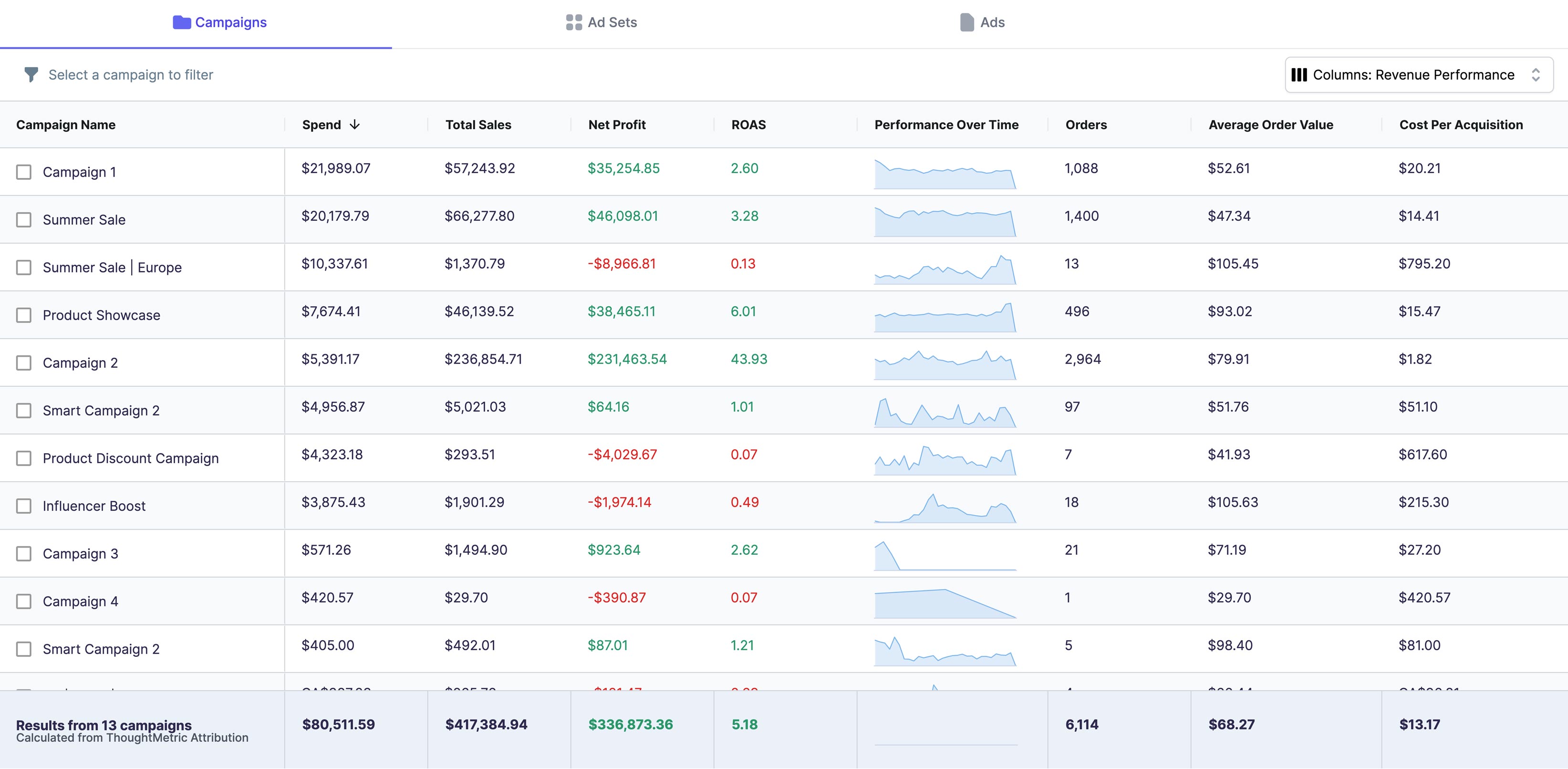Are you wondering how to measure the effectiveness of your Facebook Ads campaigns? One essential metric to track is the customer acquisition cost (CAC). Knowing your CAC can help you make informed decisions about your advertising budget, target audience, and marketing strategies.
Understanding Customer Acquisition Cost (CAC)
Before diving into how to calculate CAC using Facebook Ads Manager data, it's essential to understand what CAC is and why it matters.
Customer acquisition cost (CAC) is the amount of money spent to acquire a new customer. This includes all costs associated with acquiring a customer, such as advertising, marketing, sales, and any other expenses incurred during the customer acquisition process. CAC is calculated by dividing the total cost of your advertising campaign by the number of new customers acquired during the campaign period.
Knowing your CAC is essential for understanding the profitability of your business. By understanding the cost of acquiring a new customer, you can make informed decisions about your marketing budget and strategy. CAC is a crucial metric for businesses looking to measure marketing effectiveness and profitability.
What is a Good CAC?
A good CAC will vary depending on the industry and business model. For example, a business with a high lifetime customer value may be willing to spend more on customer acquisition than a business with a lower lifetime value.
Generally speaking, a low CAC is desirable, as it indicates that your advertising campaigns are acquiring new customers at a reasonable cost and generating a positive return on investment. However, it's important to balance your CAC with other metrics, such as customer lifetime value and overall profitability, to ensure that your business is sustainable in the long term.
Why is CAC Important for Your Business?
CAC is a crucial metric for businesses looking to measure marketing effectiveness and profitability. A high CAC means that your advertising campaigns are costing you more than they should be, and it may be time to reevaluate your targeting, messaging, and budget. A low CAC indicates that your campaigns are acquiring new customers at a reasonable cost and generating a positive return on investment.
By tracking your CAC over time, you can identify trends and make informed decisions about your marketing strategy. For example, if your CAC is consistently increasing, it may be time to explore new advertising channels or adjust your targeting to reach a more relevant audience.
Ultimately, understanding your CAC is essential for making informed decisions about your marketing budget and strategy. By optimizing your CAC, you can maximize your return on investment and drive sustainable growth for your business.
Setting Up Facebook Ads Manager for CAC Calculation
Now that you have a basic understanding of CAC, let's dive into how to calculate it using Facebook Ads Manager.
Before we get started, it's important to note that calculating CAC can be a complex process that requires a lot of data and analysis. However, with the right tools and strategies, it can be done effectively.
Creating a Facebook Ads Account
If you haven't already, create a Facebook Ads account and set up a new advertising campaign. This process is fairly straightforward and can be done by following the step-by-step instructions provided by Facebook.
Once you have your account set up, you'll need to decide on the objective of your campaign. This could be anything from increasing brand awareness to driving website traffic or generating leads.
Navigating the Facebook Ads Manager Interface
Once you have a campaign set up, navigate to the Ads Manager dashboard. The dashboard provides an overview of your campaigns, ad sets, and ads, as well as performance metrics such as impressions, clicks, and conversions.
It's important to familiarize yourself with the Ads Manager interface and the various features it offers. This will help you to navigate the platform more efficiently and make more informed decisions about your campaigns.
Customizing Columns for CAC Metrics
To calculate CAC in Ads Manager, you'll need to customize your columns to include relevant metrics such as cost per result, conversions, and total spent. You can easily add or remove columns by clicking the 'Columns' button and selecting 'Customize Columns.'
It's important to choose the right metrics for your CAC calculation, as this will have a significant impact on the accuracy of your results. You may need to experiment with different combinations of metrics to find the ones that work best for your specific campaign.
Once you have your columns set up, you can start analyzing your data and calculating your CAC. This can be a time-consuming process, but it's essential for understanding the effectiveness of your campaigns and making informed decisions about your advertising strategy.
Overall, setting up Facebook Ads Manager for CAC calculation is an important step for any business looking to optimize their advertising efforts and improve their ROI. With the right tools and strategies, it's possible to calculate CAC accurately and use this information to make data-driven decisions about your campaigns.
Calculating CAC Using Facebook Ads Manager Data
Now that you have set up Ads Manager for CAC calculation let's look into how to calculate CAC.
Identifying Relevant Metrics for CAC Calculation
The first step in calculating CAC is to identify the metrics you'll need from Facebook Ads Manager. These metrics include:
- Cost per result
- Conversions
- Total spent
Calculating CAC with a Simple Formula
Once you have these metrics, calculating CAC is straightforward. Simply divide the total amount spent by the number of new customers acquired during the campaign period. The formula for CAC is:
CAC = Total Campaign Spend / Number of New Customers Acquired
Analyzing CAC Over Time and Across Campaigns
It's essential to track your CAC over time and across campaigns to identify trends and patterns. Analyzing CAC data can help you understand how changes in your campaigns are affecting customer acquisition costs and where you need to make improvements.
Tips for Reducing Customer Acquisition Cost
While knowing your CAC is essential, improving it is even more critical. Here are a few tips to reduce your customer acquisition costs:
Optimizing Ad Targeting and Audience Segmentation
Ensure that your advertisements are targeted to the right audience and are being shown to people who are likely to convert. Use Facebook Ads Manager's targeting options and tools like lookalike audiences to refine your audience segmentation and improve ad targeting.
Improving Ad Creatives and Messaging
Create eye-catching ads that tell your brand's story and resonate with your audience. Experiment with different ad creatives, designs, and messaging to see what works best in terms of conversion rates and engagement.
Utilizing Retargeting Strategies
Retargeting campaigns can be an effective way to reduce your CAC by targeting people who have already engaged with your brand but haven't yet converted. Use Facebook Pixels or Custom Audiences to retarget people who have visited your website or engaged with your brand on social media.
Conclusion
Calculating CAC can help you measure the effectiveness of your Facebook Ads campaigns and identify areas where you can improve. Use the tips outlined in this article to reduce your CAC, and create successful, cost-effective advertising campaigns that generate a positive return on investment.





